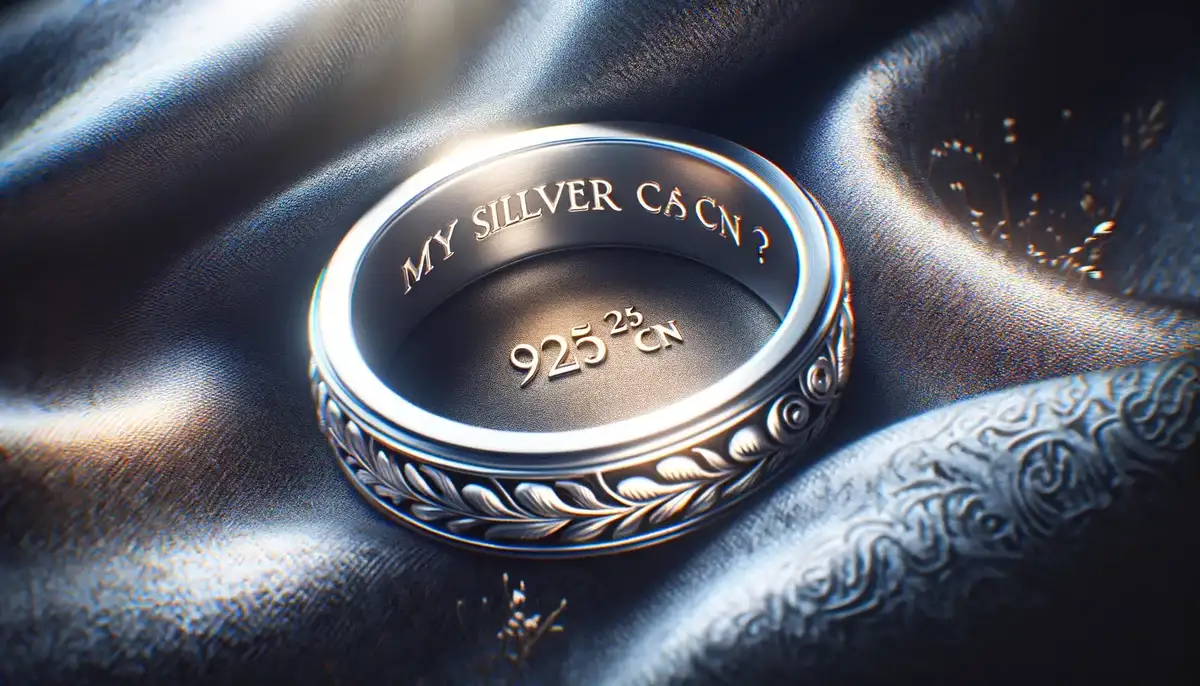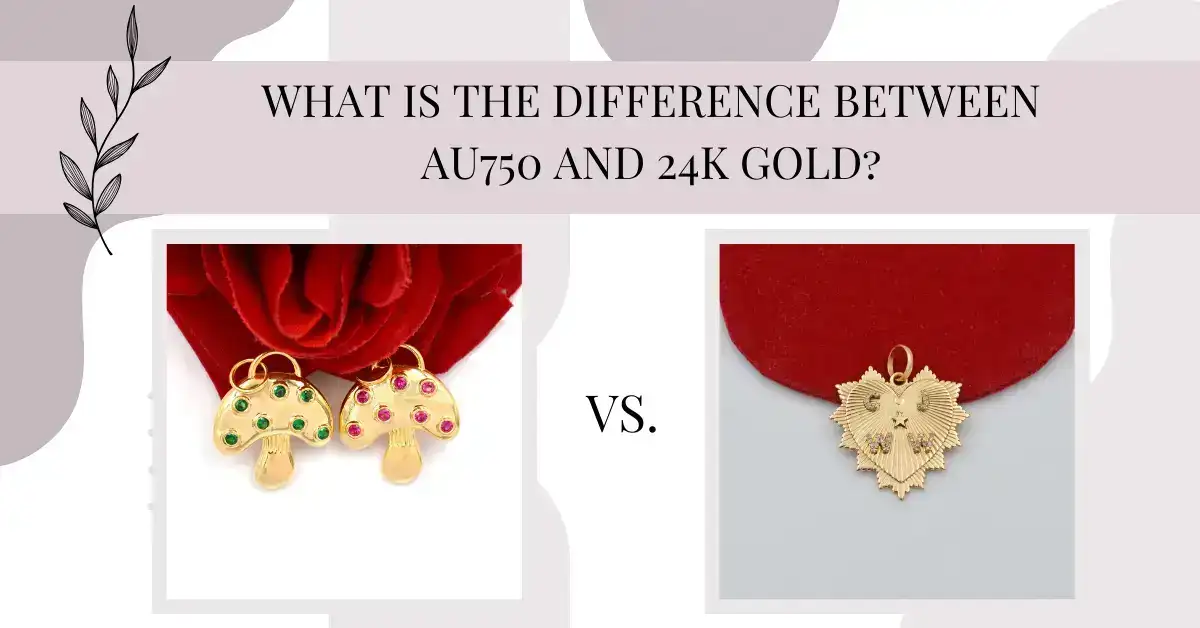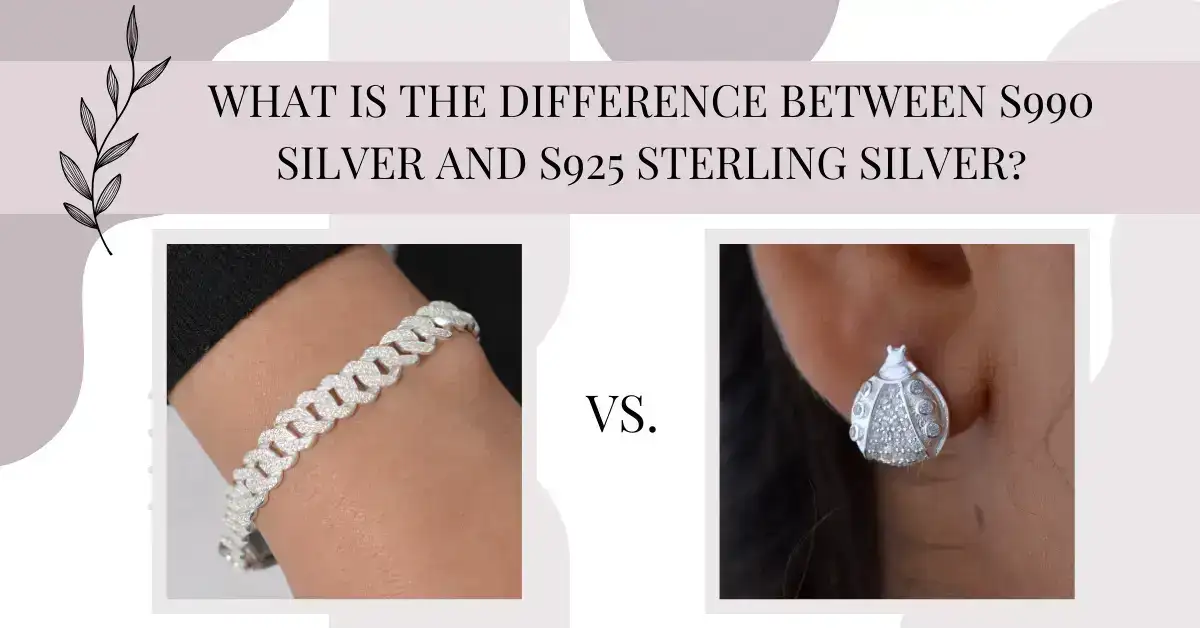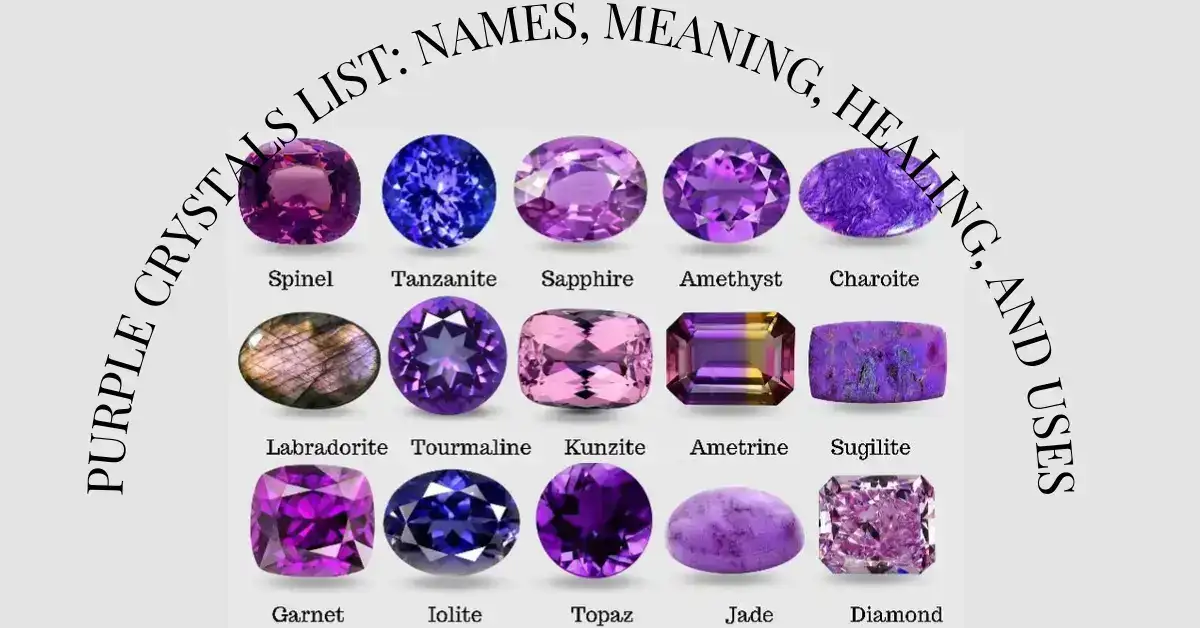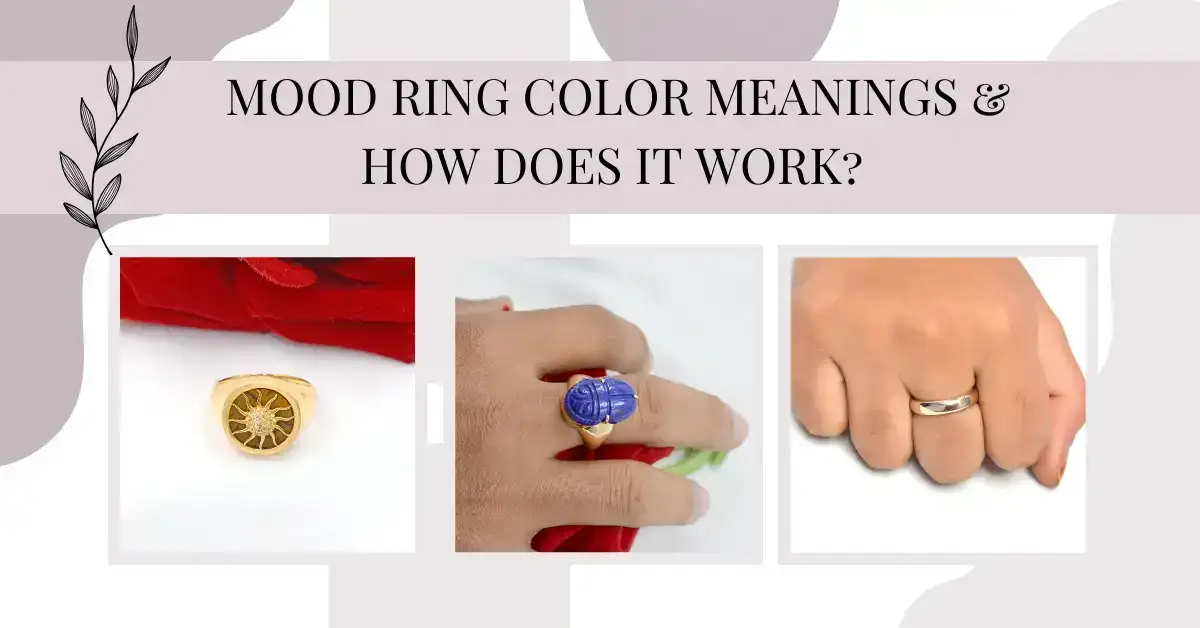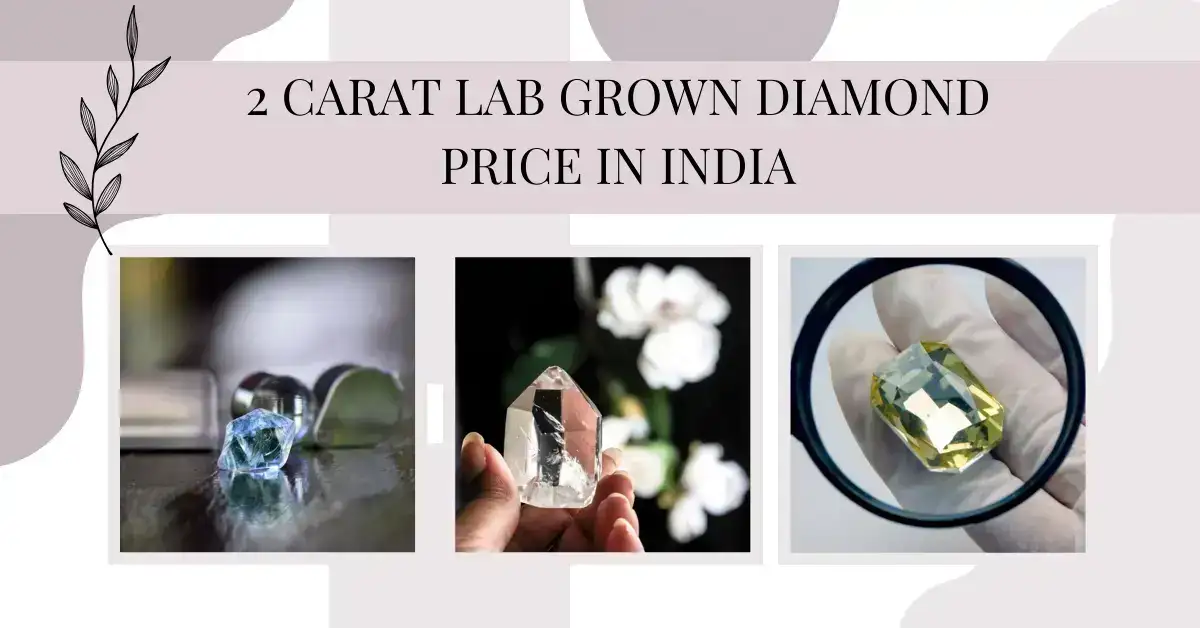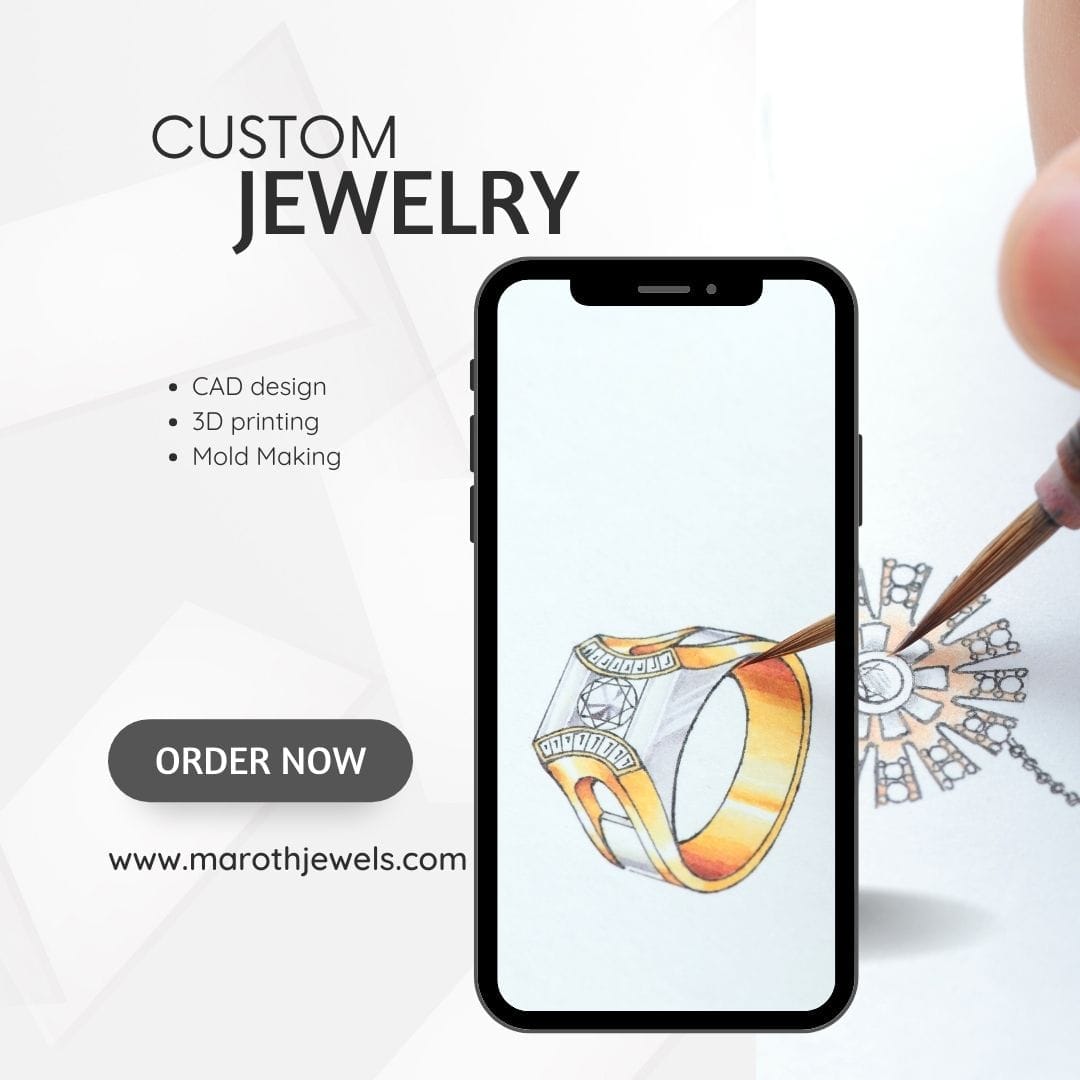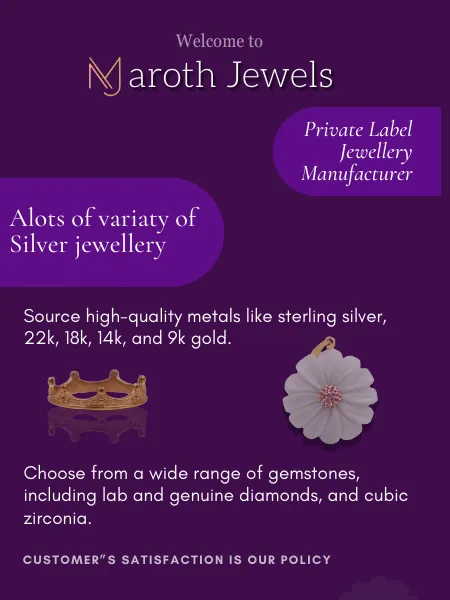Jewelry Manufacturing Process Step By Step
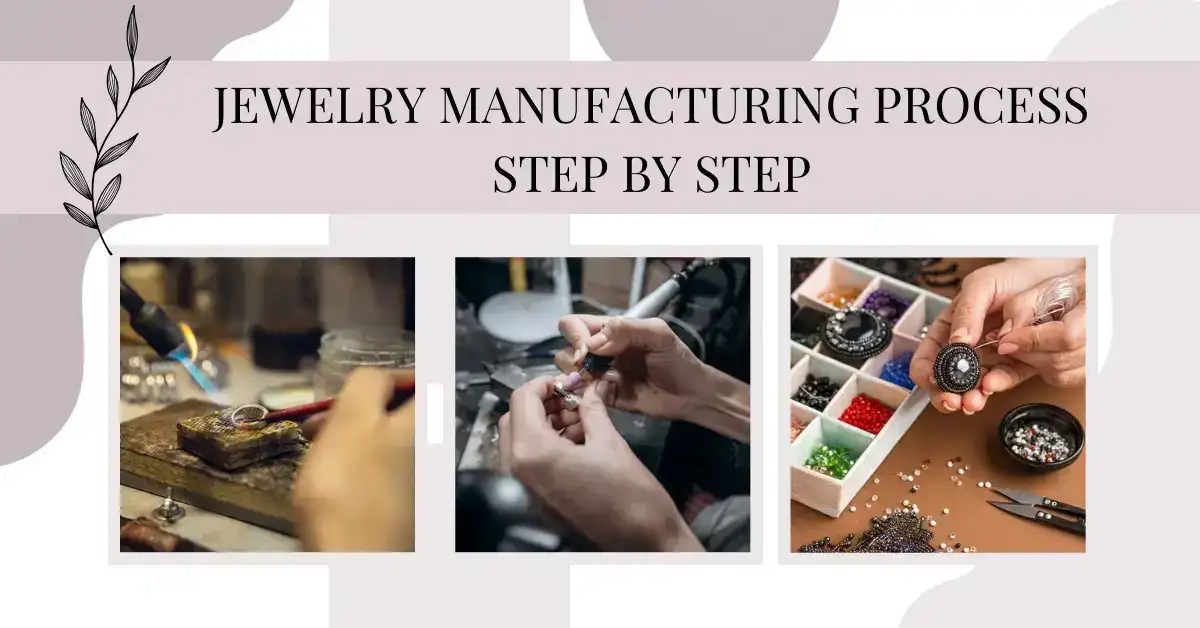
Jewelry Manufacturing Process Step By Step
Possessing this fundamental understanding will enable you to interact productively with your work coordinator, facilitating the production process. This information is particularly crucial if you plan to collaborate with many businesses rather than just one studio during the project. Lastly, it will make it easier for you to comprehend how the related expenses of making jewelry are broken down, enabling you to respond to that invoice with the best knowledge possible!
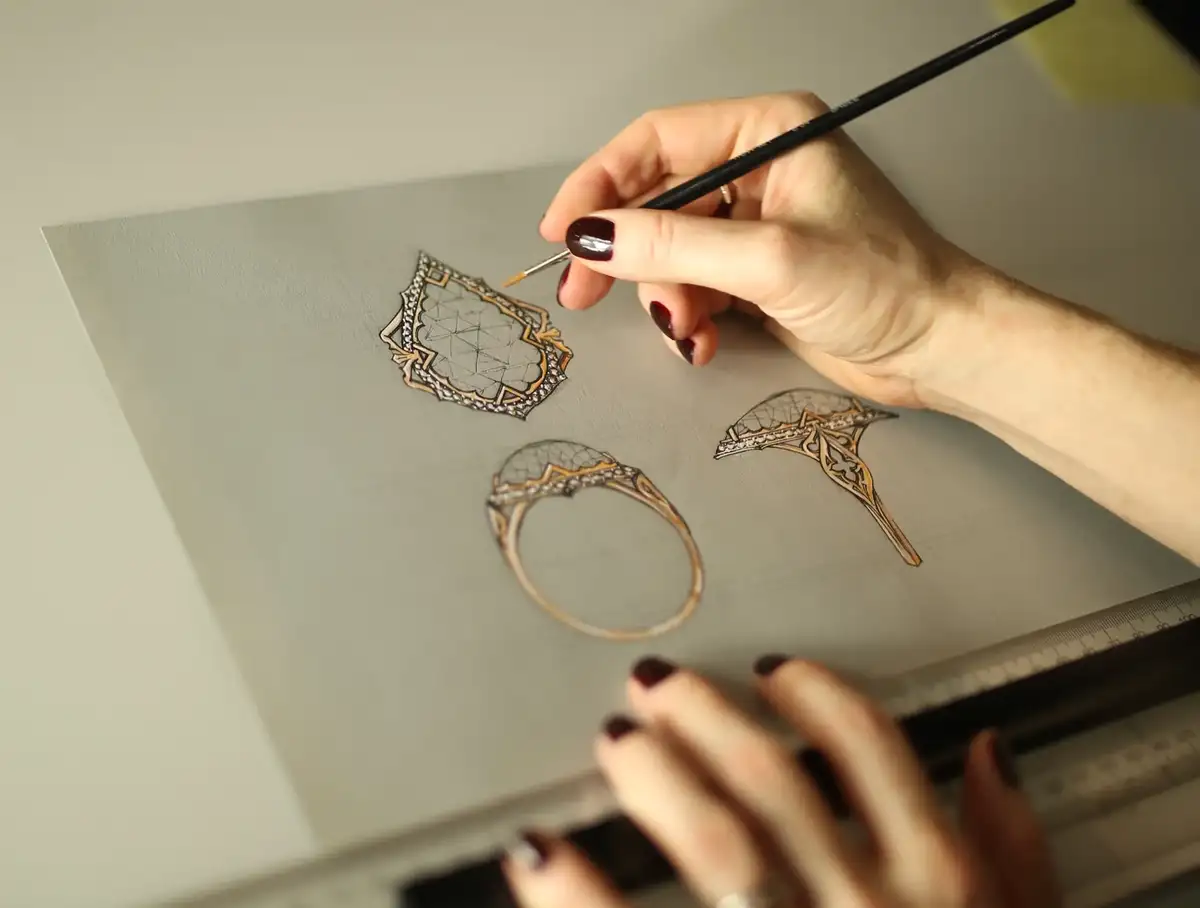 Step 1 - Designing
Step 1 - Designing
This stage allows you to see your jewelry before committing to full production, bear in mind that the 3D model may look better than your completed item since it was created primarily for usefulness rather than beauty! Nevertheless, you may always ask for a render that is more thorough.
Step 2 - CAD/CAM 
The remainder of the process, including design, machining, and manufacturing, is called CAM. The manufacturing of mobile phones, computer gear, and cars all heavily rely on CAD/CAM design. In actuality, it is everywhere. Who would construct a new iPad or automobile by hand? However, as software has advanced, CAD/CAM design is now effective even in craft sectors like the production of jewelry and rings.
For the creation of jewelry, CAD/CAM design offers four forms of modeling. These include hybrid, surface, solid, and polygonic parameters. Various models are used in various contexts. For a complex or sophisticated design, you would use a hybrid model, and for a recurrent motive, you would use a solid parameter model.
VISIT FOR :: custom pendant india
Step 3 - Model Making/3d Printing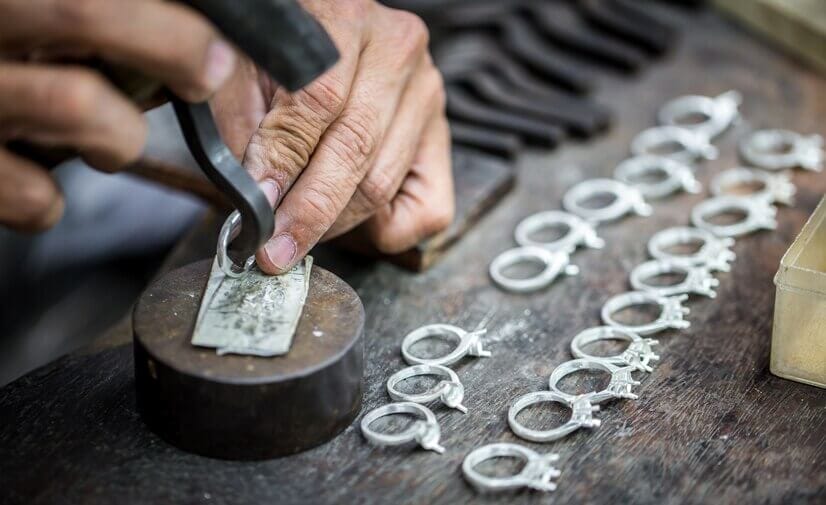
Investment casting, the most widely used technique for 3D printing jewelry, is often used in indirect printing techniques. This entails creating extremely detailed 3D printouts of wax models of different jewelry items, which are then utilized to create molds rather than actually creating jewelry pieces for end usage.
It blends conventional mold-making methods, which often include the use of gypsum or wax, with 3D printing. Users must utilize digital light processing (DLP) or stereo lithography (SLA) to 3D print the castable model in resin. The mold is then made by covering the 3D-printed model with gypsum. Once the gypsum has solidified, the resin is emptied, and liquid metal is added.
Step 4 - Rubber Mold 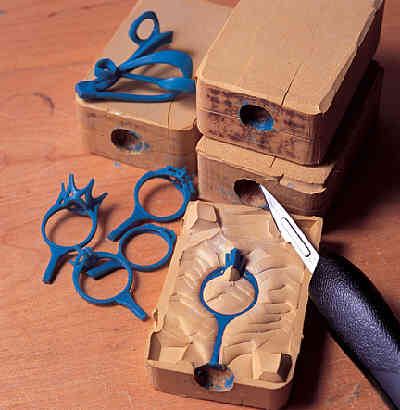
It is made from heat-treated and compressed rubber sheets. This is very useful for base metal masters and other heat-resistant metal products. After your master is carefully removed from the mold, the remaining material may be sent to our wax injection team so they can prepare the wax for casting.
Step 5 - Waxing / Wax Tree 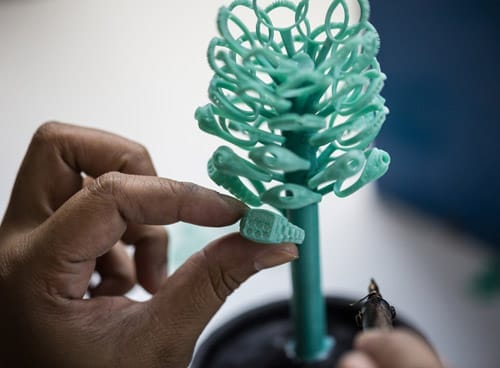
Waxing is the method of creating wax models by pressing pressure into a cavity created by the rubber mold on the commercial wax injector machine. Casting is done using these wax replicas. 'Treeing' is the process of soldering the wax components onto a wax stem. These are made exclusively to be filed and shaped by jewelers.
 Step 6 - Casting
Step 6 - Casting
The full casting process involves placing the wax tree in a steel flask and adding a slurry of chemical powder, which takes about an hour to solidify.
Step 7 - Grinding 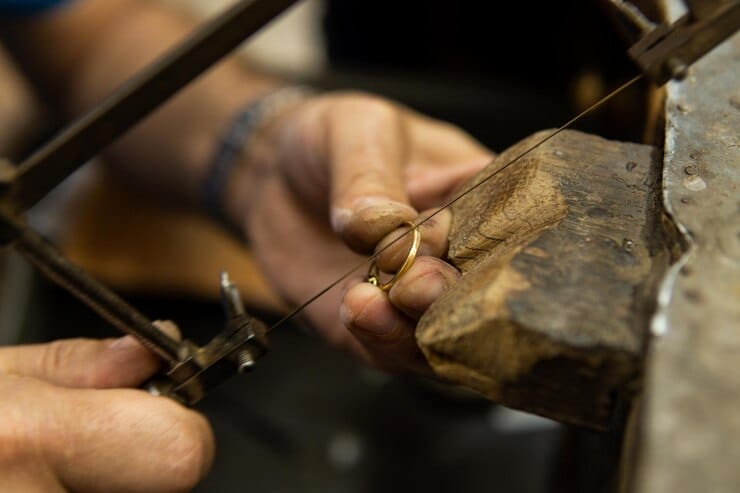
Grinding, commonly referred to as surface grinding, is machining where the material is removed to achieve surface finishes and precise finish tolerances using a powered abrasive wheel, stone, belt, paste, sheet, compound, etc.
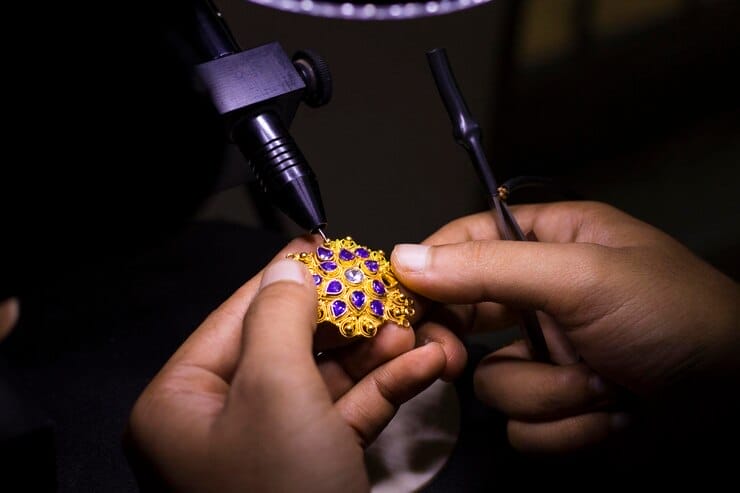 Step 8 - Stone Setting
Step 8 - Stone Setting
There are many kinds of settings for gemstones. The four fundamental setting styles are widely acknowledged to be prong, bezel, channel, and bead. But from these foundational designs, dozens of altered setting types for pendants, rings, and earrings have developed.
Step 9 - Filing / Assembly and Pre Polishing 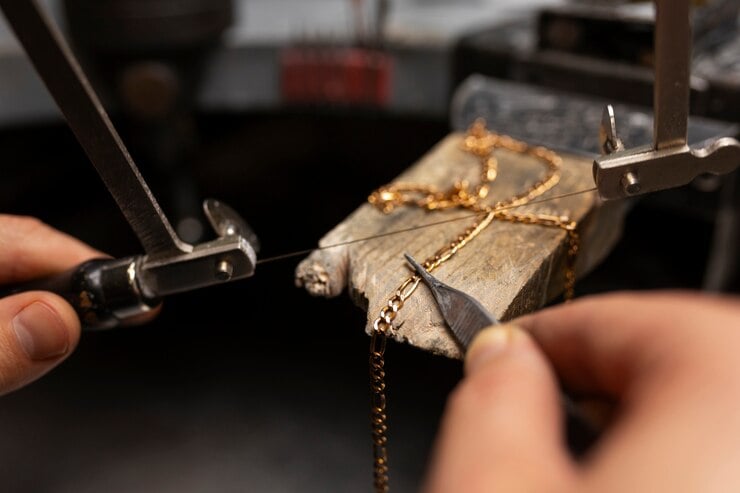
The next step in the jewelry manufacturing process is called Filing. Under Filing, the extra solder or metal is removed from the object. A range of instruments, including files and burns, are used to eliminate the casting layer and provide a polished appearance.
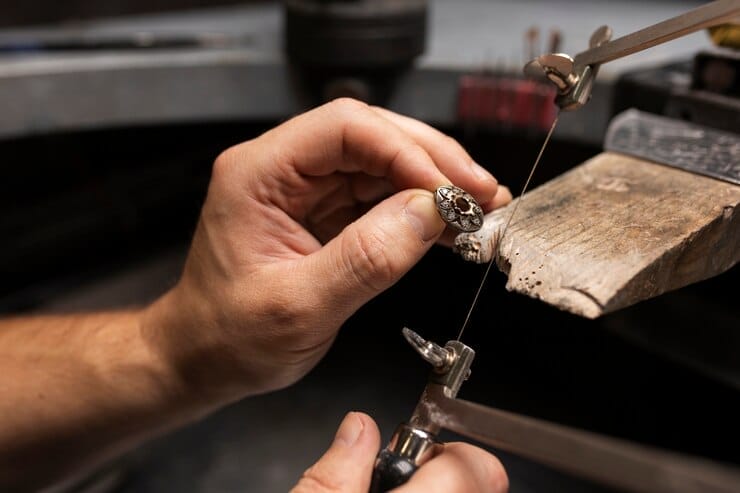 Step 10 - Metal Setting
Step 10 - Metal Setting
The procedure of setting or fastening the gemstone in the jewelry is called metal setting. Various metal settings produce different designs. To give the jewelry item a striking look, several metal settings are even combined.
Step 11 - Polishing 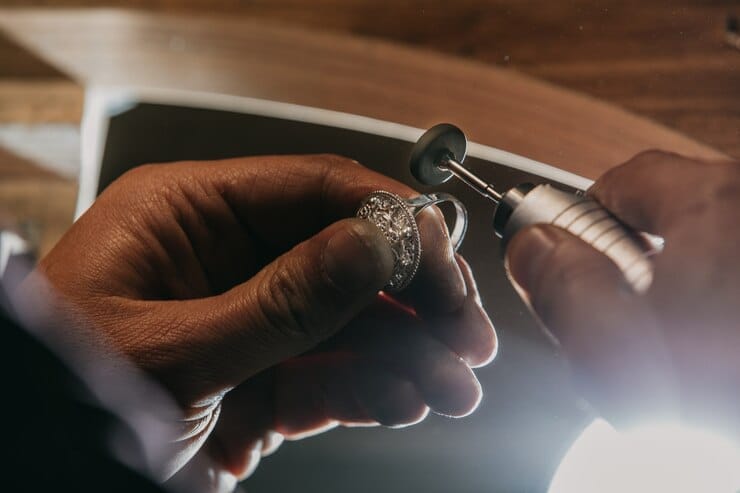
Little portions of the metal's surface are removed during the jewelry polishing process, leaving a smooth finish that is prepared and ready for buffing.
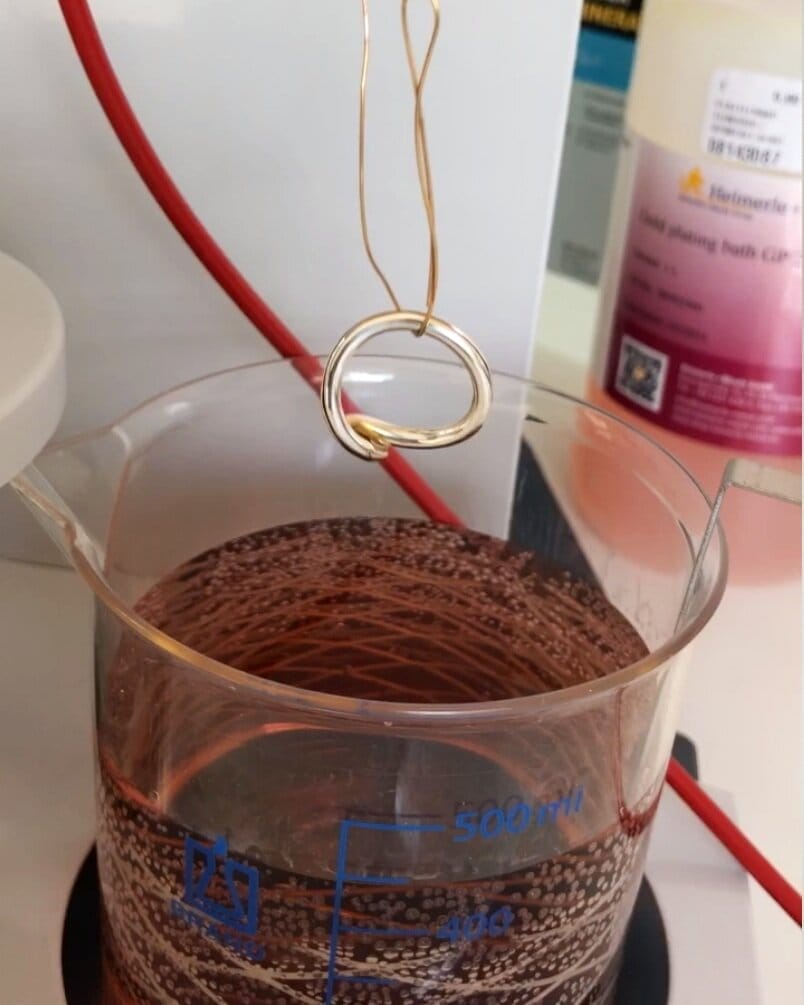 Step 12 - Plating
Step 12 - Plating
The technique of electroplating involves using a direct electric current to cover a metal surface or item with a very thin layer of another metal. The metals get partly dissolved as a result, and a chemical link is formed between them.
VISIT FOR :: indian bangles wholesale
Step 13 - Quality Control 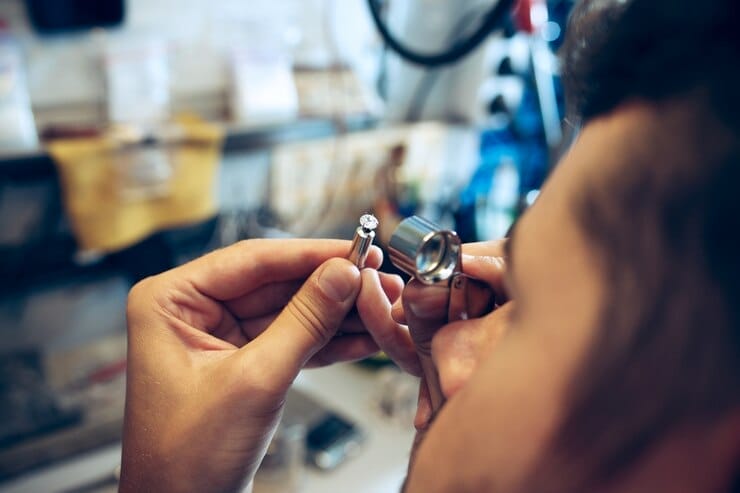
Jewelry producers and sellers need more, if any, objective tools and information at their disposal to evaluate the longevity and customer satisfaction of their items. As a result, merchants and manufacturers are left wondering whether their quality goals will be achieved and may have to deal with product returns, recalls, and unhappy customers, all of which might damage their image and brand.
The Different Types Of Jewelry We Make:
Earrings
Since every woman dreams of having a jewelry box, you will discover more than just earrings. An earring may dress you for any event and make you look put together in two seconds. The "JHUMKAS" earring style is among the most popular. Very few people will be able to resist being enamored with the heritage-inspired mood and stunning beauty of a pair of stud earrings. The benefit is that they go well with any outfit and will not let you down.
Rings
There are two other ways to categorize this representation of unending love: A whole row of jewels placed on a costly band characterizes the entire eternity ring, sometimes referred to as a traditional eternity ring. Half-eternity rings: Only the upper portion of the shank is covered with jewels in these rings.
Charm Holder
Charms are little add-ons that fit into a necklace or bracelet to complete the piece of jewelry together with the band. To make it as simple as possible to incorporate the charms into the bracelet or necklace, they are fitted with tiny snap hooks.
Mushroom Pendants
Mushroom pendants are pendants with a simple composition that epitomizes bold simplicity. Their domed metal cap, available in your choice of color, contrasts with their elliptical, hand-blown glass diffuser, each unique.
Locks and Clasp Findings
Together, the locks clasp findings and the jewelry are connected. These are the locking clasp findings that may facilitate the connection of our jewelry—they are neither beads nor gemstones.
Carabiner locks
The majority of contemporary carabiners have a gate opening and "key-lock" nose shape, which makes them less likely to snag than those with notch and pin designs. The solid gate design is the foundation of most locking carabiners.
And Many More
We have a lot more other jewelry collections, which you can easily find on our website.
The Different Materials Used In Jewelry Manufacturing
Gold
History may be traced back to gold jewelry. Since then, it has gained popularity and remained fashionable constantly. Gold has always been in style, even if jewelry styles have altered throughout time.
Everybody has long appreciated and respected the gold jewelry design business. Many artists have been influenced by gold throughout the years. The majority of the designs for gold jewelry that you see now are influenced by historical periods.
Sterling Silver
Fine silver is more costly than less pure sterling silver because it has a larger proportion of pure silver. But sterling silver still has an excellent appearance so that you may acquire classic, reasonably priced items for less money. The durability factor is another.
Gemstones
Less than 100 of the more than 2,000 known natural minerals are utilized as jewels, and just 16 have attained recognition. These include olivine, opal, quartz, spinel, topaz, turquoise, zircon, feldspar, garnet, jade, lazurite, beryl, chrysoberyl, corundum, diamond, and zircon.
Rhodium
Among all the non-radioactive metals, rhodium is the rarest. It may be found in nature uncombined in river sands in North and South America, where it coexists with other platinum metals. It may also be found in Ontario, Canada's copper-nickel sulfide ores. Commercial rhodium is obtained as a by-product of refining nickel and copper.
Conclusion
Now that the necklace is complete, all that is needed to bring out the high brightness and sheen of the silver is a quick final polish. Rouge and other tougher compounds are used in polishing to get the appropriate shine. To ensure that all the features and accents in the silver metal wholesale jewelry shine, apply fine red jeweler's rouge to a soft cotton cloth and buff the item by hand.
READ MORE:: Where Can You Find the Best Wholesale Jewellery Markets in Delhi?
Recent Posts
My silver ring says 925 CN. What does this mean?
What is the Difference Between Au750 and 24k Gold?
Jewelry Manufacturing Process Step By Step
10 Famous Jewelry Manufacturers In Italy of 2024
Mood Ring Color Meanings & How Does It Work?
2 Carat Lab Grown Diamond Price In India
Related products
CAD desinging Charge
Contact Us For Custom Jewelry
Please get in touch with us and share your ideas if you have personalized jewelry or are searching for a private label jewelry manufacturer. In accordance with your suggestions, we will make and present genuine jewelry.
Drop Us a Line
Scan QR Code
for immediate contact










